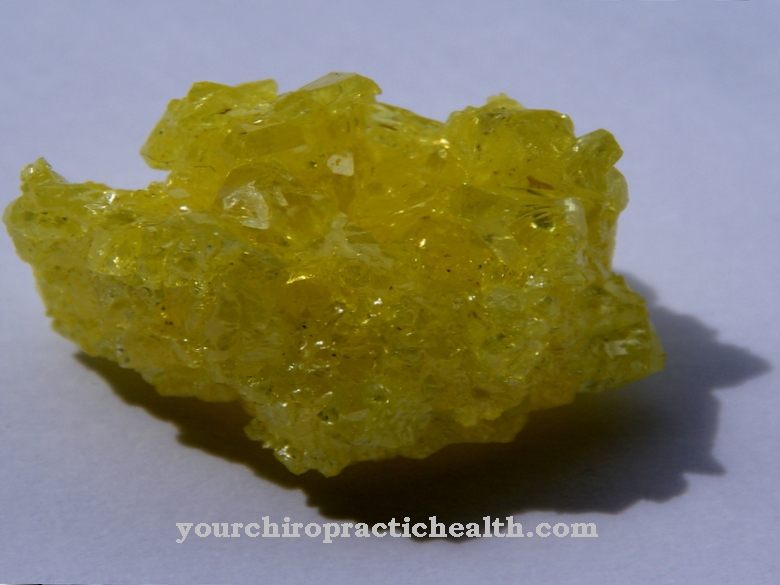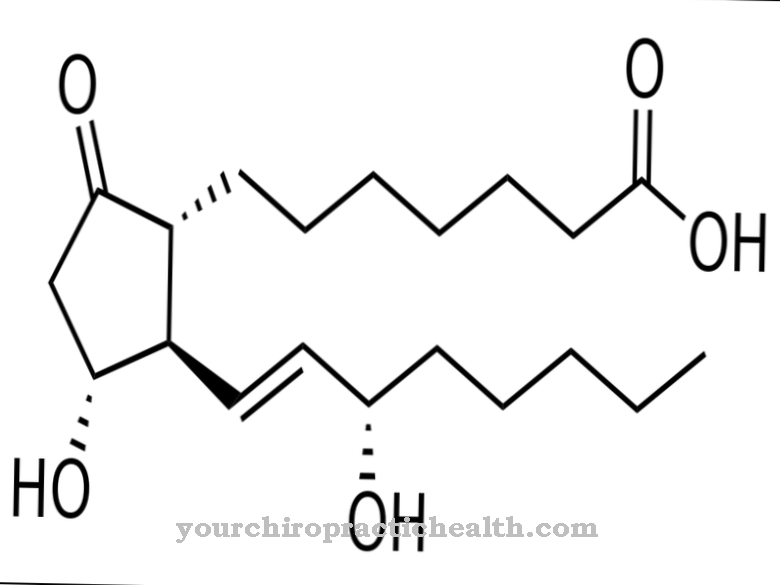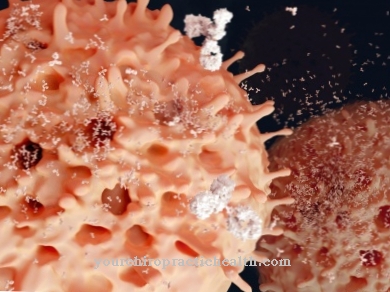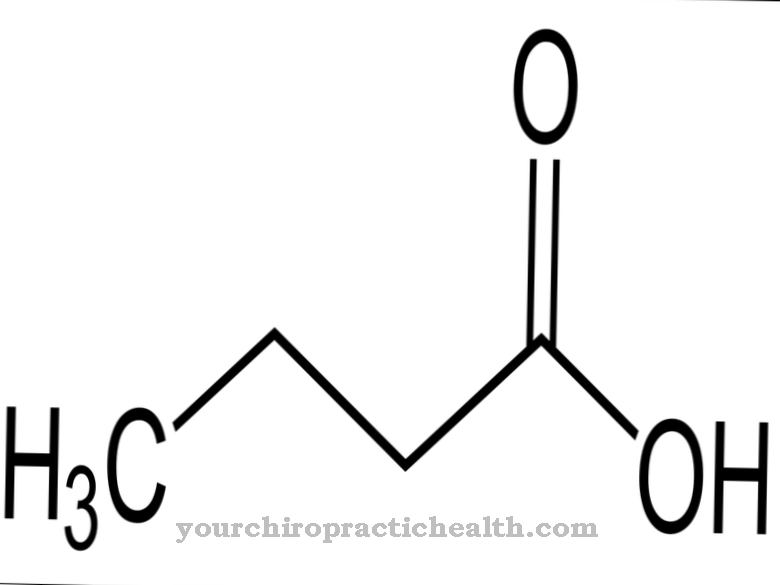Proline is an amino acid. The human organism is able to produce proline on the basis of glutamic acid. It is a non-essential amino acid.
What is proline
Proline is one of the non-essential, secondary amino acids or imino acids in the human organism, as it can produce proline independently. However, protracted and chronic illnesses as well as age can negatively affect the body's own proline production.
In these cases, the proline supply can no longer be sufficient. This amino acid is found in the proteins of cartilage, connective tissue and in bones. If there is a proline deficiency, this endogenous amino acid is quickly broken down in these areas and can lead to various complaints. The aliphatic side chain has a ring structure that influences the three-dimensional protein structure. The amino group has a nitrogen atom that binds the side chain to itself.
Function, effect & tasks
The word component "Pro" stands for the preliminary stage of hydroxylin. This always arises with the help of vitamin C, either due to the body's own production or from outside supply. As an amino acid, L-proline is an exception for the human organism.
It makes protein and has a second amino group. Although L-proline is not essential for the human body and is genetically neutral, it is important for connective tissue, bones and cartilage. It also provides protection against ions that can impair the enzyme activities of the cytoplamas. It is created in collagen, which is responsible for its mechanical properties. In contrast to other amino acids, cyclic proline does not have a free amino group. A ring is formed and, together with the alpha-amino group, creates a cyclic amino group.However, proline is not only an important component in the supply of connective tissue, bones and cartilage, it also has a protective function.
Proline prevents collagen breakdown by blocking the digestive enzymes (collagenases) that are responsible for this breakdown. If a patient suffers from chronic and / or long-term illnesses or if they are old, the risk of the breakdown of connective tissue, bones and cartilage mass increases. The enzymes become more active, begin with digestion and can cause multiple damage if the proline supply is no longer guaranteed due to illness or signs of aging. If the patient receives a sufficient amount of vitamin C, the body is able to produce proline-based hydroxyproline, a related substance that is also important for the formation of the structural proteins elastin and collagen.
The human skin has a large proportion of peptide-bound L-prolines. Proline is the only amino acid that does not have a hydrogen atom during peptide formation. Therefore, it is also referred to as a helix breaker, which often changes from an alpha helix into another secondary structure, mostly random coil. Like proline, hydroxyproline also counteracts cartilage and bone inflammation, supports the development of connective tissue and joints and is significantly involved in regeneration after a chronic and / or prolonged illness.
Education, occurrence, properties & optimal values
Structural protein is a protein in which proline or hydroxyproline occurs. However, these amino acids are not found in other proteins. Therefore, there is no genetic code for hydroxyproline. It is made from proline, which is already built into the protein chain. It is created by the docking of a hydroxyl group on this protein chain.
Dairy and meat products are high in proline, while plant-based foods are low in amino acids. Due to the direct connection with bones, connective tissue and cartilage mass, a proline deficiency can lead to various complaints in these areas, such as bone loss, joint and bone inflammation, degradation of cartilage and connective tissue, and a general decline in performance. Decreased stability can also occur within the artery walls.
In order to ensure an optimal supply of proline, a regular supply of vitamin C must take place. In healthy people, the intake of vitamin C through their daily diet is sufficient. In the case of sick or old people, an additional award must be considered. The attending physician decides on the type and amount of dosage. Overdosing on proline from dietary supplements can cause various undesirable side effects. With an additional vitamin C supply in medically acceptable amounts, no side effects are known.
Diseases & Disorders
Proline is important for human growth because bone growth requires collagen, which is made from L-proline. Medical professionals have found that a combination of proline, lysine and ascorbic acid has antimetastatic and antiproliferative effects on breast cancer, cancer cell lines, colon cancer and skin cancer.
This combination of nutrients prevented the extracellular matrix from entering the body. The spread of cancer cells was reduced. The addition of epigallocatechin gallate (EGCG) increases this nutrient synergy. According to experts, this combination of nutrients is a safe tool for cancer control. If the human organism is under permanent stress or if there are long-term or chronic diseases, the body is no longer able to produce this collagen component from glutamic acid.
The structuring protein is missing and can be supplied through dietary supplements. Manufacturers and doctors recommend taking two L-proline capsules a day. One capsule contains 500 mg powder. The consumption recommendation is three months. Amino acids are all-rounders and so the addition of proline with simultaneous administration of vitamin C reduces osteoarthritis pain in the knee, shoulder and neck area. It also has a positive effect on the regeneration of bones, connective and cartilage tissue. With this targeted scientific support, the body is able to activate its self-healing powers.













.jpg)

.jpg)
.jpg)











.jpg)